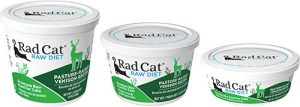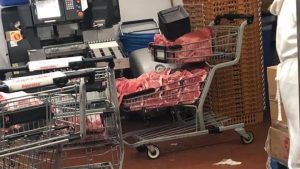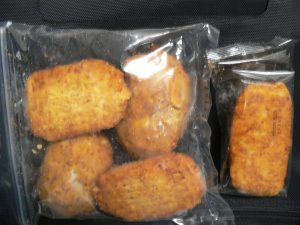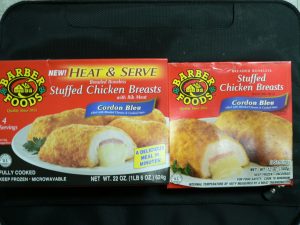Charlie Peel of the Australian writes that the woman accused of sparking the nationwide fruit contamination crisis by sticking sewing needles into strawberries will remain behind bars for at least 10 days.
 The weird thing in Australia is food safety types won’t go public with what they know when they know it because they are afraid it will upset some British-modeled court case; I say bullshit.
The weird thing in Australia is food safety types won’t go public with what they know when they know it because they are afraid it will upset some British-modeled court case; I say bullshit.
So does all the risk communication literature.
Public needs to know.
Prosecutors opposed the bail application of Caboolture woman My Ut Trinh, 50, who appeared in Brisbane Magistrates Court this morning, because they feared she may suffer retribution from those angered by her alleged actions.
Following a two-month police investigation, she was charged on Sunday with seven counts of contamination of goods with intent to cause economic loss.
Ms Trinh, who was born in Vietnam but came to Australia as a refugee 20 years ago, worked at the Berrylicious/Berry Obsession fruit farm in southeast Queensland as a supervisor.
The court heard Ms Trinh was allegedly motivated by spite and revenge when she inserted needles into strawberries between September 2 and 5.
Mr Cridland said the alleged reason for her wanting to seek revenge was “not articulated” by the police.
Arguing for bail, Mr Cridland said the extensive publicity around the case, which included copycat actions throughout Australia, should not influence his client’s ability to be released on bail.
He denied she was a flight risk.
“She has been aware that she has been a person of interest for over two months and she has not changed phone number or address,” he said.
“I might add, other people working on these farms have left the country. She has not.”
Mr Cridland said it was too early to say whether forensic evidence, which found Ms Trinh’s DNA on a contaminated punnet of strawberries in Victoria, was a direct match or a mixed profile.
Prosecutor Cheryl Tesch said bail was “strongly opposed” because there was a “high risk of witnesses being interfered with”.
She said the strawberry farm owner had suffered significant financial loss and reputational damage.
Magistrate Roney said the alleged offending was unusual.
“It is a most peculiar way to go about promoting or agitating a workplace grievance, to sabotage an employer,” she said.
The matter will return to court on November 22.
This is what I wrote when all the unknows were out there.
It holds up.
How to stop food sabotage
16.sep.18
The Sydney Morning Herald
Doug Powell
https://www.barfblog.com/2018/09/how-to-stop-food-sabotage/
Last Sunday, Sept. 16, 2018, I had a requested op-ed published in the Sydney Morning Herald. I was a little rusty, so Amy did more than just clean it up, and I haven’t gotten around to posting it until now because there was some medical stuff last week, but all is well and here it is:
My 9-year-old daughter and I were watching the news on Saturday morning and she asked, why would someone put a needle in strawberries?
Some people are not nice.
A couple of years ago a food safety type asked me, what’s the biggest risk to the food supply.
I didn’t hesitate.
Deliberate tampering and food fraud.
Food safety has traditionally been faith-based – especially when it comes to fresh fruit and vegetables. Consumers cannot control how food is handled before it gets to them. This is why consumers need to know their suppliers and know what they are doing to keep people safe.
This latest food tampering scare – 11 cases of contaminanted strawberries reported nationally so far, the first in Sydney on Saturday – makes that clear.
Faith-based food safety sucks. It always has. Risks have always been present. As Madeleine Ferrieres, the author of Mad Cow, Sacred Cow: A History of Food Fears, wrote, “All human beings before us questioned the contents of their plates.”
But contemporary consumers forget that contamination risk has always been with us: “We are often too blinded by this amnesia to view our present food situation clearly. This amnesia is very convenient. It allows us to reinvent the past and construct a complaisant, retrospective mythology.”
“We still live with the illusion of modernity, with the false idea that what happens to us is new and unbearable,” she has said in an interview.
What’s new is that we have better tools to detect problems. This also presents an opportunity: those who use the best tools should be able to prove their food is safe through testing and brag about it. They can market food safety measures at retail.
The days of faith-based food safety are coming to a protracted close.
There is a lack – a disturbing lack – of on-farm food safety inspection; farmers need to be more aware of the potential for contamination from microbes (from listeria in rockmelon, for example) as well as sabotage.
There is an equally large lack of information to consumers where they buy their produce. What do Australian grocery shoppers know of the food safety regulations applied to the produce sold in their most popular stores? Who can they ask to find the answers?
The best solution is for farmers and retailers to market food safety. If they have a great food safety program they should be promoting it. Consumers can handle more information rather than less.
Douglas Powell is a retired professor of food safety in Canada and the US who now lives in Brisbane. He blogs at barfblog.com
BTW, the Eagles are terribly overrated, but this song has relevance; maybe not to this story, maybe to me.











